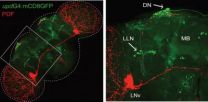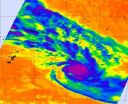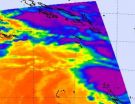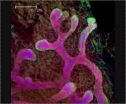(Press-News.org) How can insurers justify spending hundreds of thousands of dollars per patient per year on "orphan drugs" – extremely expensive medications for rare conditions that are mostly chronic and life-threatening -- when this money could provide greater overall health benefit if spread out among many other patients? Those spending decisions reflect the "rule of rescue," the value that our society places on saving lives in immediate danger at any expense. But the broad application of the rule of rescue will be increasingly difficult to support as "personalized medicine" produces more drugs genetically targeted to relatively small groups of patients, concludes an article in the Hastings Center Report. For example, rather than a new blockbuster drug that treats millions with hypertension, new targeted therapies will treat only those few thousand with a particular genetic makeup.
"Orphan drug coverage decisions highlight the tension that can arise in health care between doing the most good possible with scarce health care resources and the desire to assist identifiable individuals regardless of cost," write the authors, Emily A. Largent, a candidate in the Ph.D. Program in Health Policy at Harvard University, and Steven D. Pearson, a visiting scientist in the National Institutes of Health Department of Bioethics and president of the Institute for Clinical and Economic Review at Massachusetts General Hospital.
The number of orphan drugs has dramatically increased since the passage of the Orphan Drug Act of 1983, which, in response to patient advocacy and public pressure, has provided an incentive for orphan drug development. In the decade before the act was passed, only 10 new drugs for rare diseases were developed. Twenty-five years later, orphan drugs represented roughly one-third of all newly approved drugs and biologics, the article reports.
The authors propose an ethical framework to guide coverage and reimbursement decisions for expensive orphan drugs based on a critical analysis of the arguments embedded in the rule of rescue.
The first argument is that we have a greater moral impulse to help patients when we can see them as individuals rather than as anonymous members of a group. Advocacy organizations for rare illnesses sometimes publicize patients with photo campaigns and other means. But the authors conclude that "no persuasive rationale exists for using identifiability in resource allocation at the policy level, and, indeed, strong ethical arguments can be made against it." Appeals to identifiability can be unethical, the authors state, because they give an unfair advantage to patients whose condition produces visible signs of illness.
The second argument is that we should give priority to saving people whose lives are endangered. But the authors conclude that this argument cannot justify coverage for orphan drugs without also considering the outcomes: in general, lifesaving orphan therapies and therapies that restore or maintain capacities central to functioning in society should be covered and those that do not achieve these health outcomes should not be covered.
The third argument concerns opportunity costs. Advocates have long presumed that the opportunity costs of expensive orphan drugs are low because the small number of people using them represents a small overall expense to an insurer. But, the authors state, this may no longer be accurate as more orphan drugs enter the research pipeline, a trend that personalized medicine will exacerbate. They call for opportunity costs to be explicitly, and transparently, included in any coverage decision.
"Tomorrow's medical care will feature a growing number of expensive therapies that offer benefit only to small populations," the authors conclude. They add that their "conceptual framework offers an advance over current decision-making practices" about coverage for orphan drugs. Instead of identifiability being a factor in decision-making, "potential health gains must be evaluated in context to determine whether they provide a meaningful benefit beyond what is already available, and the opportunity costs must be weighed to determine whether they are acceptable."
###
Justifying insurance coverage for orphan drugs
2012-02-08
ELSE PRESS RELEASES FROM THIS DATE:
Post surgical phone support improves outcome following knee replacement
2012-02-08
SAN FRANCISCO -- Poor emotional health and morbid obesity are associated with less functional gain following total knee replacement (TKR) surgery. In the new study, "Can Telephone Support During Post-TKR Rehabilitation Improve Post-op Function: A Randomized Controlled Trial," presented today at the 2012 Annual Meeting of the American Academy of Orthopaedic Surgeons (AAOS), approximately 180 patients were categorized by gender, body mass index (BMI) and emotional health. Each patient randomly received either emotional telephone support by a trained behavioral specialist, ...
Molecular path from internal clock to cells controlling rest and activity
2012-02-08
PHILADELPHIA – The molecular pathway that carries time-of-day signals from the body's internal clock to ultimately guide daily behavior is like a black box, says Amita Sehgal, PhD, the John Herr Musser Professor of Neuroscience and Co-Director, Comprehensive Neuroscience Center, at the Perelman School of Medicine, University of Pennsylvania.
Now, new research from the Sehgal lab is taking a peek inside, describing a molecular pathway and its inner parts that connect the well-known clock neurons to cells governing rhythms of rest and activity in fruit flies. Sehgal is ...
How early breast tumors become deadly: A small group of molecules might hold the answer
2012-02-08
Some early-stage breast cancers are potentially harmless, but others invade surrounding healthy tissue and become deadly.
This study has identified a small pattern of molecules that highlights important differences between early-stage breast tumors and invasive, deadly ones.
The findings might lead to a way to identify early tumors that will likely become invasive.
COLUMBUS, Ohio – Researchers have discovered a restricted pattern of molecules that differentiate early-stage breast tumors from invasive, life-threatening cancer. They also found a similar molecular signature ...
NASA satellite sees tropical storm Cyril a strong, compact storm
2012-02-08
Tropical Storm Cyril was known as "11P" has been strengthening since February 6, and still appears very compact on infrared NASA satellite data.
In the morning hours of February 7 (local time Vanuatu) Cyril was located south of the island of Vavau in the Kingdom of Tonga. All warnings for Niue and Tonga have now been cancelled.
During the morning hours of February 7, Cyril picked up speed and is moving to the southeast at 28 knots (~32 mph/~52 kph). Cyril's maximum sustained winds were near 45 knots (~52 mph/~83 kph). Those tropical-storm-force winds only extended out ...
44 percent of postmenopausal women with distal radius fracture have low levels of vitamin D
2012-02-08
SAN FRANCISCO – Wrist fractures, also called distal radius fractures (DRF), are among the most common osteoporosis-related fractures occurring on average 15 years earlier than hip fractures. As vitamin D deficiency has recently been linked with muscle weakness, increased fall risks, and bone fractures, investigators sought to determine the prevalence of vitamin D deficiency among post menopausal women with DRF. The study, "Hypovitaminosis D in Postmenopausal Women with a Distal Radius Fracture," was presented today at the 2012 Annual Meeting of the American Academy of ...
NASA sees cyclone Jasmine's power and new eye
2012-02-08
Cyclone Jasmine continues to wind between New Caledonia and Vanuatu and bring cyclone-force winds, heavy rain and very rough surf. NASA's Aqua satellite passed overhead early on February 7 and noticed the strongest part of the cyclone was around the center and north and east of the center. Aqua data showed that an eye has developed.
The Atmospheric Infrared Sounder (AIRS) instrument on NASA's Aqua satellite captured an infrared image of Jasmine on February 7, 2012 at 03:17 UTC (2:17 p.m., Pacific/Noumea local time/Feb 6, 10:17 p.m. EST). Jasmine's strongest thunderstorms ...
Nicaragua, Central America's Top Economy in 2011
2012-02-08
The Central Bank of Nicaragua (BCN, for its acronym in Spanish), in a recently published report, stated that the country's gross domestic product (GDP) increased by 4.7 percent in 2011, the highest growth rate in the Central American region and well above the Latin America and the Caribbean average of 4.3 percent.
Following Nicaragua's growth in 2011 were Costa Rica with a 3.8 percent GDP growth, Guatemala with 3.3 percent, Honduras with 3.2 percent and El Salvador with 1.4 percent. This is the second consecutive year in which Nicaragua leads the region in terms of ...
Rothman at Jefferson researchers find epidural steroid injections do not benefit spine patients
2012-02-08
(PHILADELPHIA) – Researchers at the Rothman Institute at Jefferson examined data on patients being treated for lumbar stenosis and the degenerative spine condition spondylolisthesis and found that patients who received epidural steroid injections (ESI) had a higher rate of crossover to surgery and fared worse in physical health and bodily pain versus those who did not receive ESI, dispelling their pre-study hypothesis.
Data for this study was gathered from the database of the prospective, multicenter NIH-funded SPORT (Spine Patient Outcomes Research Trial) of surgical ...
Salk scientists use an old theory to discover new targets in the fight against breast cancer
2012-02-08
La Jolla, CA -- Reviving a theory first proposed in the late 1800s that the development of organs in the normal embryo and the development of cancers are related, scientists at the Salk Institute for Biological Studies have studied organ development in mice to unravel how breast cancers, and perhaps other cancers, develop in people. Their findings provide new ways to predict and personalize the diagnosis and treatment of cancer.
In a paper published February 3 in Cell Stem Cell, the scientists report striking similarities between genetic signatures found in certain types ...
HostGator Partners with Website Builder BaseKit
2012-02-08
BaseKit, the online website builder, has been launched by HostGator; enabling their SMB's to build and manage their own website with the state of the art technology. The hosting giant, based in Houston, Texas, is offering BaseKit to both new and existing customers.
As one of the fastest growing private companies in America, HostGator is always seeking innovative products and services to enrich its customers' experiences and surpass their expectations. BaseKit has received international acclaim as an all-in-one website builder that lets SMB's build a site that "looks ...




